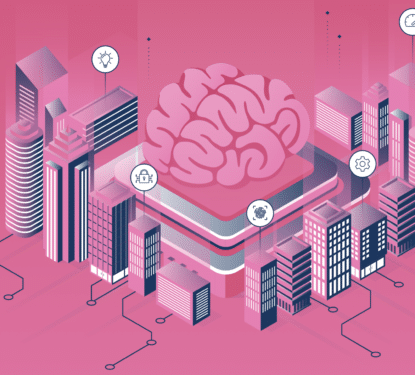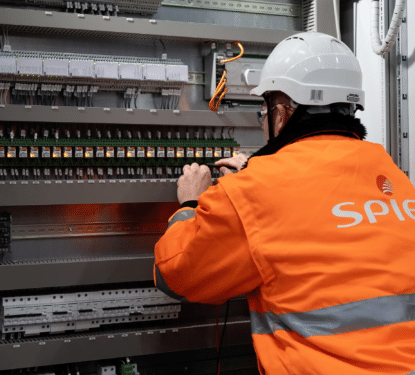The smart home promised to make our lives more straightforward. To automatically set lights and environmental controls to your exact preferences, to alert you of visitors or intruders, even to remember your shopping list and send it to your mobile phone. In reality, however, the smart home has become a minefield of complexity and compatibility issues. Smart devices speak a variety of languages meaning their installation into a single control system can challenge even the most tech-minded homeowners.
For the majority of people today, the closest thing they will get to a smart home is a smart speaker linked to smart lights and a connected doorbell, which is not bad but still a far cry from the Jetson’s style lifestyle that technologists once promised.
“In the early ’60s, in The Jetsons vision of a smart home, everything about the entire building from walls and windows to floors and technology was reimagined,” says Richard Harper, a sociologist and computer scientist who has worked extensively with Microsoft and Orange. But two decades ago, that vision began to shift thanks to new technologies. “The expectation that the walls of the house would be different had been abandoned, and instead houses were seen as husks that are populated with freestanding internet-of-things devices.”
Newly built smart homes of the future may be needed to get closer to this dream but for now, in the vast majority of cases, the sector will need to work out how to make dumb existing homes smarter. And it isn’t necessary for a smart building to be a new build according to Harper. “What’s enabled by internet, Wi-Fi, freestanding autonomous devices is so many new possibilities that you can almost bypass the problem of cabling a house,” Harper says. “Most often homes are old ladies and you’re trying to make them smart with new tech on the inside.”
Unfortunately, that’s when the problems start; the first being which devices to choose from the wide variety of smart home products on the market. For most consumer electronics, basing a choice on features or price is enough to satisfy most consumers but going home with a variety of products from different manufacturers could be the beginning of the end for your smart home. Compatibility is a real problem in this highly fragmented market, it is not just as simple as connecting each device to your WiFi, but maybe it should be.
Most people looking to convert their home into a smart one will need to hire a company that specializes in smart home technology to install the entire system and even manage it, meaning every time you want a new product they will have to visit for the installation. This elevates cost to a level that rules out the mass market but it is a situation being addressed by some of the bigger players in the smart home sector.
Apple has made great strides with its HomeKit ecosystem, where many products connect to iPhones as interfaces. Amazon and Google aren’t far behind, encouraging Alexa or the Google Assistant compatible products to make that clear on the box. These approachable smart home ecosystems are a big step in the direction of do-it-yourself smart home retrofits, and in recent years they have provided many success stories, at least for those with some tech-knowhow.

“Over two years ago, I converted my old "dumb" home into a still-old "smart" home,” explained Antonio Villas-Boas, Senior Tech Reporter for Business Insider. “I've been using a smart home system for the past two years that lets me control my home's climate, door locks, and security, and it has proved indispensable. In fact, I would take my existing devices or buy smart home devices if I were to move.”
“It's not so much the convenience of controlling these things from the couch or even abroad — it's the peace of mind of knowing away from home that I locked the door or set the alarm and the reduced energy bills from better managing the heater or air conditioning,” continued Villas-Boas in an article entitled: I've been living in a smart home for 2 years — and I probably will for the rest of my life. “Plus, controlling things like the temperature with my voice on smart speakers like Amazon's Echo or Google's Home devices, while not perfect, can add a futuristic touch.”
While it may not be like the Jetsons just yet, our homes are getting smarter, device by device, as the technology gradually responds to demands of the market. The fact that smart homes need to be built step-by-step in this way, with a few issues here and there is, perhaps, just part of the process and in fitting with the organic way in which non-smart elements of the home evolve.
“Part of making the home special is the labors of being at home: how tidy you are, what you put on the wall, in the fridge, the effort you put into your cooking. The role of tech can’t displace those activities. It has to let people do other things,” says Harper. So maybe we should view the process of building a smart home in the same way we view the process of building a home, step-by-step, continuously evolving and with a few mistakes along the way.



